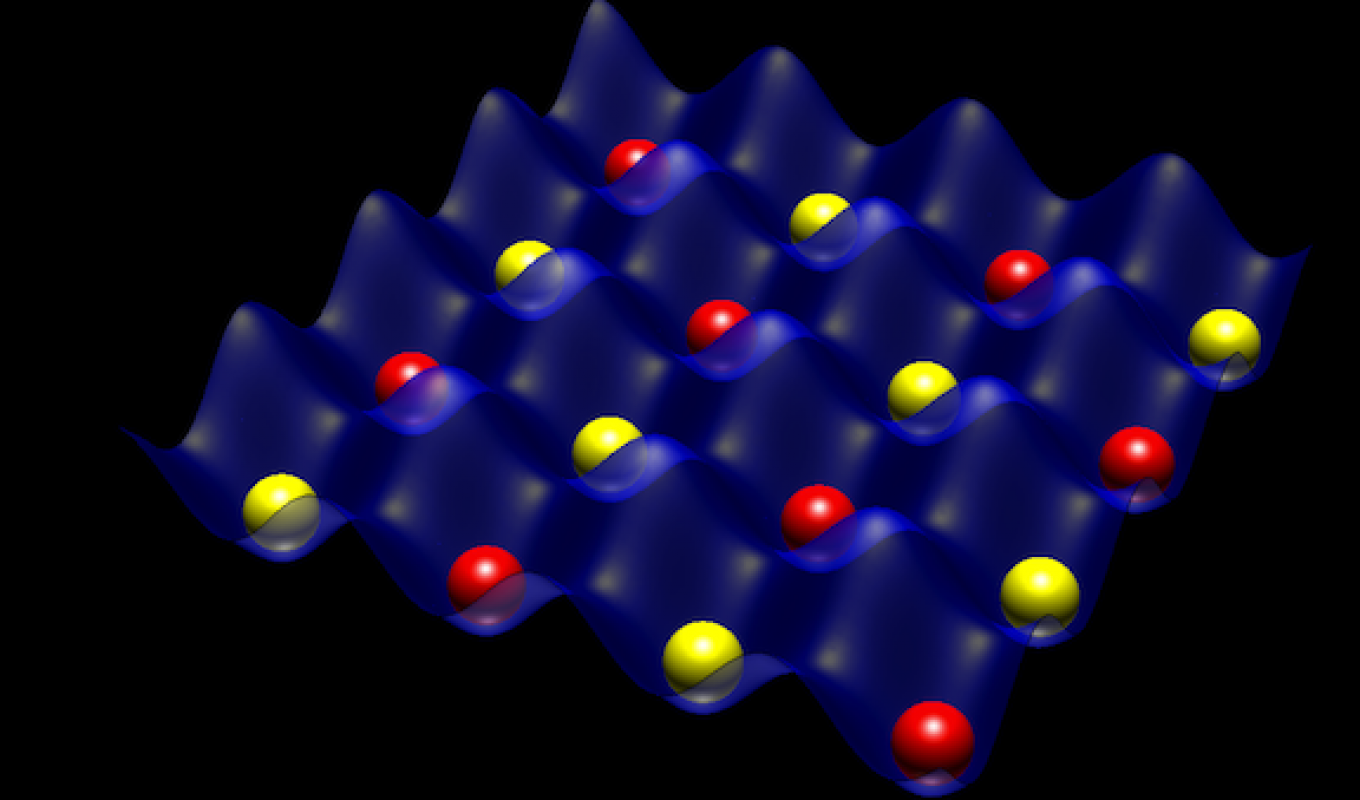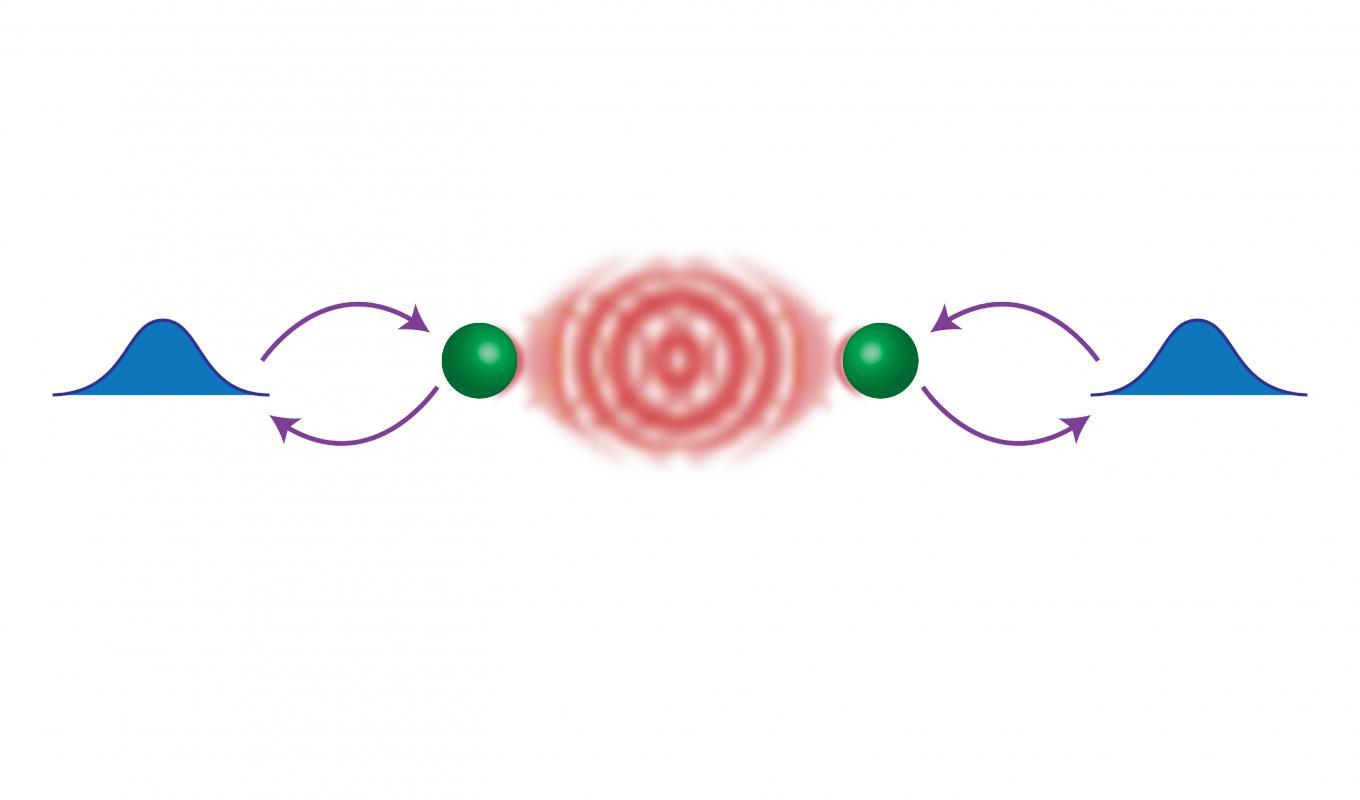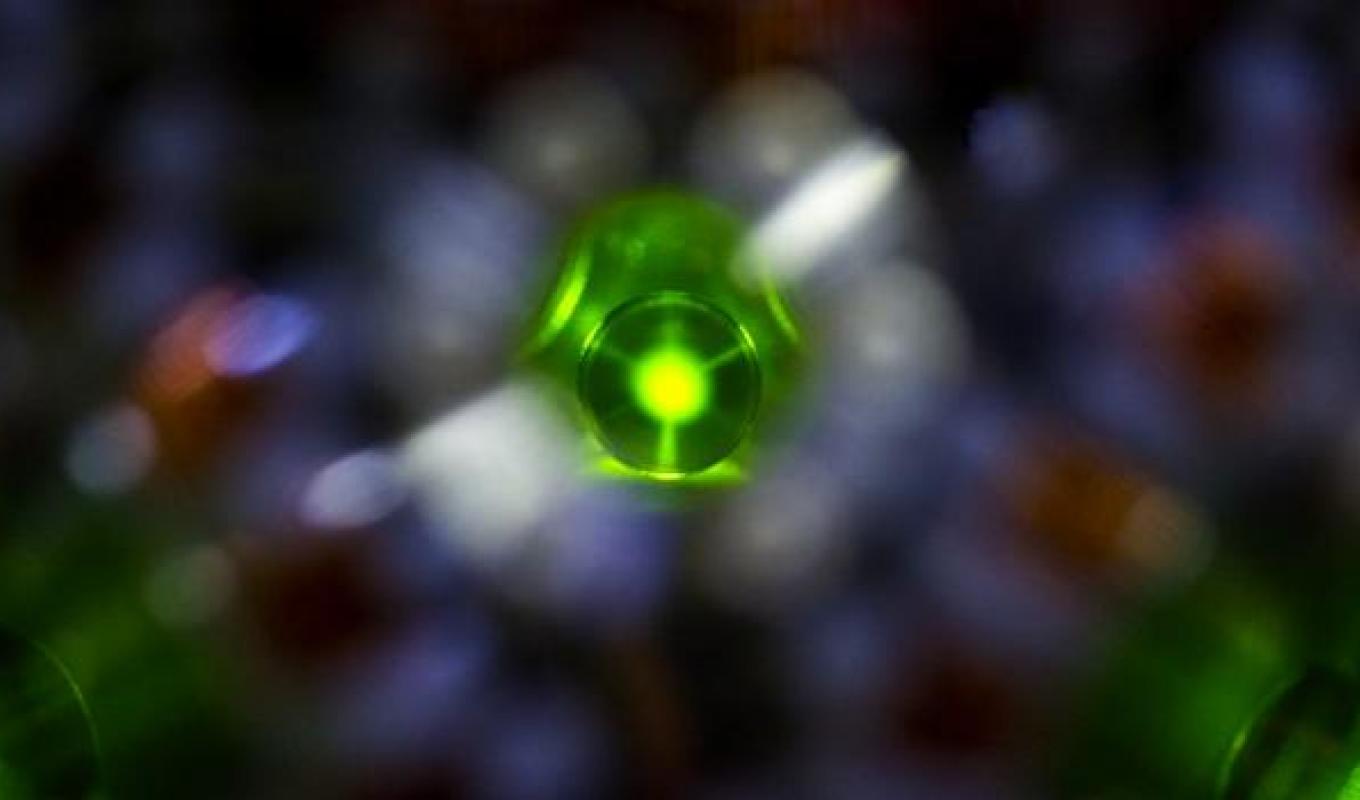Research
Cold Atoms in Optical Lattices

Optically trapped, ultra-cold atoms provide a natural platform for quantum simulation and quantum computing. In this project, we use cold 87Rb atoms trapped in dynamic optical lattices to study many-body physics and to explore experimental quantum control of atom states. An optical lattice, produced by interfering two or more laser beams in free space, traps atoms into arrays of individual sites, reminiscent of condensed matter crystals or atomic registers. Unlike traditional condensed matter systems, the lattice properties (such as the trapping depth and the unit cell structure) can be changed in real time during an experiment. This control allows us to perform range of experiments with applications to quantum computing and quantum emulation of condensed matter systems.
This research is being carried out in the Physical Sciences Complex on the University of Maryland campus.
Interacting Photons

This project, jointly led by Steve Rolston and Trey Porto, uses strong photon-photon interactions mediated by Rydberg atoms for quantum networking applications. Single-photon nonlinearities allow for significantly improved quantum networking protocols, but it is challenging to generate such photon interactions at the few photon level. This projects explores the use of Rydberg-dressed polaritons to realize photon nonlinearities and develop tools for quantum networking applications.
This research is being carried out in the Physical Sciences Complex on the University of Maryland campus.
Ultracold Rb/Yb Mixtures

Mixtures of ultracold atoms provide a range of opportunities for cold atom research beyond single-species experiments. In this project we use mixtures of 87Rb and Yb atoms to study quantum gas mixtures. Ytterbium is particularly attractive because there are seven stable isotopes (including five bosonic species and two fermionic species with nuclear spin 1/2 and 5/2), allowing for study of Bose-Bose and Bose-Fermi mixtures. The atomic structure of 171Yb allows for novel optical potentials with sub-wavength structure, as well as detection of the atomic wavefunction with sub-wavelength resolution. In addition, RbYb ground state molecules have potentially large electric dipole moments, allowing for long range interactions. There are a variety of possible research avenues open to this system, but our initial goals are to use a rubidium Bose-Einstein condensate as a "bath" to provide controlled dissipation for ytterbium trapped in a Rb-blind optical lattice. Much as laser cooling uses scattering of optical photons to cool atoms well below room temperature, here the high energy modes of the rubidium condensate would act as a scattering mode to cool the ytterbium below the rubidium temperature. Engineered coupling to such dissipative modes may provide new methods for producing low-entropy states. This research is being carried out at the Joint Quantum Institute on the Atlantic building at the University of Maryland campus.